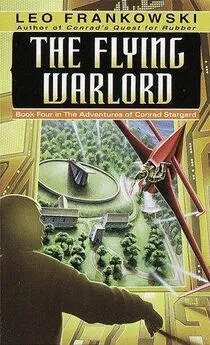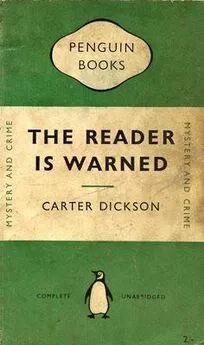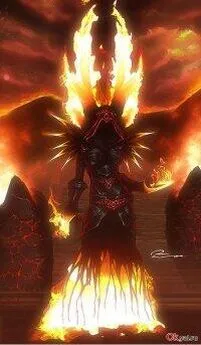Charles Stross - The Merchant’s War
- Название:The Merchant’s War
- Автор:
- Жанр:
- Издательство:неизвестно
- Год:неизвестен
- ISBN:нет данных
- Рейтинг:
- Избранное:Добавить в избранное
-
Отзывы:
-
Ваша оценка:
Charles Stross - The Merchant’s War краткое содержание
The Merchant’s War - читать онлайн бесплатно полную версию (весь текст целиком)
Интервал:
Закладка:
"Yeah! This slide was taken at 2,500 magnification on our scanning electron microscope. It's a slice from the lateral geniculate nucleus of our first test sample. See the layering here? Top two layers, the magnocellular levels? They do fast positional sensing in the visual system. Now let's zoom in a bit."
The image vanished, to be replaced by a much larger, slightly grainier picture in which individual cells were visible, blobs with tangled fibers converging on them like the branches of a dead umbrella, stripped of fabric.
"Here's an M-type gangliocyte. It's kind of big, isn't it? There are lots of dendrites going in, too. It takes signals from a whole bunch of rod and cone cells in the retina and processes them, subtracting noise. You with me so far?"
"Just about," Eric said dryly. Image convolution had been another component of his second degree, the classified one he'd sweated for back when he'd been attached to NRO. "So far this is normal, is it?"
"Normal for any dead dried human brain on a microscope slide." Hu giggled. It was beginning to grate on Eric's nerves.
"Next."
"Okay. This is where it gets interesting, when we look inside the gangliocyte."
"What- "it took Eric longer, this time, to orient himself: the picture was very grainy, a mess of weird loops and whorls, and something else-"the heck is that? Some kind of contamination-"
"Nope." Hu giggled again. This time he sounded slightly scared. "Ain't nothing like this in the textbooks."
"It's your black box, isn't it?"
"Hey, quick on the uptake! Yes, that's it. We went through three samples and twelve microscopy preparations before we figured out it wasn't an artifact. What do you think?"
Eric stared at the screen.
"What is it?"
A different voice said, "it's a Nobel Prize-or a nuclear war. Maybe both."
Eric glanced round in a hurry, to see Dr. James standing behind him. For a bureaucrat, he moved eerily quietly. "You think?"
"Cytology." James sounded bored. "These structures are in every central nervous system tissue sample retrieved so far from targeted individuals. Also in their peripheral tissues, albeit in smaller quantities. At first the pathology screener thought he was looking at some kind of weird mitochondrial malfunction-the inner membrane isn't reticulated properly-but then further screening isolated some extremely disturbing DNA sequences, and very large fullerene macromolecules doped with traces of heavy elements, iron and vanadium."
"I'm not a biologist," said Eric. "You'll have to dumb it down."
"Continue the presentation, Dr. Hu," said James, turning away. Show-off, thought Eric.
Hu leaned back in his chair and swiveled round to face Eric. "Cells, every cell in your body, they aren't just blobs full of enzymes and DNA, they've got structures inside them, like organs, that do different things." He waved at the screen. "We can't live without them. Some of them started out as free-living bacteria, went symbiotic a long time ago. A very long time ago." Hu was staring at Dr. James's back. "Mitochondria, like this little puppy here-"he pointed at a lozenge-shaped blob on the screen"-they're the power stations that keep your cells running. This thing, the thing these JAUNT BLUE guys have, they're repurposed mitochondria. Someone's edited the mitochondrial DNA, added about two hundred enzymes we've never seen before. They look artificial, like it's a tinker-toy construction kit for goop-phase nanotechnology-well, to cut a long story short, they make buckeyballs. Carbon-sixty molecules, shaped like a soccer ball. And then they use them as a substrate to hold quantum dots-small molecules able to handle quantized charge units. Then they stick them on the inner lipid wall of the, what do you call them, the mechanosomes."
Eric shook his head. "You're telling me they're artificial. It's nanotechnology. Right?"
"No." Dr. James turned round again. "It's more complicated than that. Dr. Hu, would you mind demonstrating preparation fourteen to the colonel?"
Hu stared at Eric. "Prep fourteen is down for some fixes. Can I show him a sample in cell twelve, instead?"
"Whatever. I'll be in the office." James walked away.
Hu stood up: "If you follow me?"
He darted off past the row of cubicles, and Eric found himself hurrying to keep up. The underground tunnel looked mostly empty, but the sense of emptiness was an illusion: there was a lot of stuff down here. Hu led him past a bunch of stainless steel pipework connecting something that looked like a chrome-plated microbrcwery to a bunch of liquid gas cylinders surrounded by warning barriers, then up a short (light of steps into another of the ubiquitous trailer offices. This one had been kitted out as a laboratory, with worktops stretching along the wall opposite the windows. Extractor hoods and laminar-flow workbenches hunched over assemblages of tubes and pumps that resembled a bonsai chemical plant. Someone had crudely sliced the end off the trailer and built a tunnel to connect it to the next one along, which seemed to be mostly full of industrial-size dish-washing machines to Smith's uneducated eye. A technician in a white bunny suit and mask was doing something in a cabinet at the far end of the room. The air conditioning was running at full blast, blowing a low-grade tropical storm out through the door: "Viol , the lab."
Eric winced: the horrible itch to correct Hu's behavior was unbearable. "It's voila ," he snapped waspishly. "I see no medium-sized stringed instruments here. And you'll have to tell me what everything is. I know that's a laminar-flow workbench, but the rest of this stuff isn't my field."
"Hey, stay cool, man! Um, where do you want me to start? This is where we work on the tissue cultures. Over there, that's the incubation lab. You see the far end behind the glass wall? We've got a full filtered air flow and a Class two environment; we're trying to get access to a Class four, but so far AMRIID isn't playing ball, so
there's some stuff we don't dare try yet. But anyway, what we've got next door is a bunch of cell tissue cultures harvested from JAUNT BLUE carriers. We keep them alive and work on them through here. We're using a 2D field-effect transistor array from Infineon Technologies. They're developing it primarily as an artificial retina, but we're using it to send signals into the cell cultures. If we had some stem cells it'd be easier to work with, but, well, we have to work with what we've got."
"Right." The president's opinion on embryonic stem-cell research was well known; it had never struck Eric as being a strategic liability before now. He leaned towards the contraption behind the glass shield of the laminar-flow cabinet. "So inside that box, you've got some live nerve cells, and you've, you've what? You've got them to talk to a chip? Is that it?"
"Yup." Hu looked smug. "It'd be better if we had a live volunteer to work with-if we could insert microelectrodes into their optic nerve or geniculate nucleus-but as the action's happening at the intracellular level this at least lets us gel a handle on what we're seeing."
Live volunteers? Eric stilled a twitch. The "unlawful combatant" designation James had managed to stick on Matthias and the other captured Clan members was one thing: performing medical experiments involving brain surgery on them was something else. Somehow he didn't see any of them volunteering of their own free will: was Hu really that stupid? Or just naive? Or had he not figured out how the JAUNT BLUE tissue cultures came to be in his hands in the first place? "What have you been able to do with the materials available to you?"
"It's amazing! Look, let me show you preparation twelve in action, okay? I need to get a fresh slide from Janet. Wait here."
Hu bustled off to the far end of the lab and waved at the person working behind the glass wall. While he was preoccupied, Eric took inventory. Okay, so James wants me to figure it out for myself. He wants a sanity check? So far, so obvious. But the next bit was a little more challenging. So there's evidence of extremely advanced biological engineering, inside the Clan members' heads. Quantum dots, fullerene stuff, nanotechnology, genetic engineering as well. Artificial organelles. He shivered. Are they still human? Or something else? And what can we do with this stuff?
Hu was on his way back, clutching something about the size of a humane rat trap that gleamed with the dull finish of aluminum. "What's that?" asked Eric.
"Let me hook it up first. I've got to do this quickly." Hu Hipped up part of the laminar-How cabinet's hood and slid the device inside, then began plugging tubes into it. "It dies after about half an hour, and she's spent the whole morning getting it ready for you."
Hu fussed over his gadgets for a while, then plugged a couple of old-fashioned-looking coaxial cables into the aluminum box. "The test cell in here needs to be bathed in oxygenated Ringer's solution at body temperature. This here's a peristaltic pump and heater combination-" He launched into an intricate explanation that went right over Eric's head. "We should be able to see it on video here-"
He backed away from the cabinet and grabbed hold of the mouse hanging off of the computer next to it. The screen unblanked: a window in the middle of it showed a grainy gray grid, the rough-edged tracks of a silicon chip at high magnification. Odd, messy blobs dotted its surface, as if a microscopic vandal had sneezed on it. "Here's an NV5I test unit. One thousand twenty-four field effect transistors, individually addressable. The camera's calibrated so we can bring up any transistor by its coordinates. These cells are all live JAUNT BLUE cultures-at least they were alive half an hour ago."
"So what does it do?"
Hu shrugged. "This is preparation twelve, the first that actually did anything. Most of the later ones arc still-we're still debugging them, they're still under development. This one, at least, it's the demo. We got it to work reliably. Proof of concept: watch."
He leaned close to the screen, muttering to himself, then punched some numbers into the computer. The cam-era slewed sideways and zoomed slightly, centering on one of the snot-like blobs. "Vio -sorry. Here we go."
Hu hit a key. A moment later, Eric blinked. "Where did it go? Did you just evaporate it?"
"No, we only carry about fifty millivolts and a handful of microamps for a fiftieth of a second. Look, let me do it again. Over... yeah, this one."
Hu punched more figures into the keyboard. Hit the re-turn key again. Another blob of snot vanished from the gray surface.
"What's this meant to show me?" Eric asked impatiently.
"Huh?" Hu gaped at him. "Uh, JAUNT BLUE? Hello, remember that code phrase? The, the folks who do that world-walking thing? This is how it works."
"Hang on. Wait." Eric scratched his head. "You didn't just vaporize that, that-" Neuron, he realized, understanding dawning. "Wow."
"We figured out that the mechanosomes respond to the intracellular cyclic-AMP signaling pathway," Hu offered timidly. "That's what preparation fourteen is about. They're also sensitive to dopamine. We're looking for modulators, now, but it's on track. If we could get the nerve cells to grow dendrites and connect, we hope eventually to be able to build a system that works-that can move stuff about. If we can get a neural stem-cell line going, we may even be able to mass-produce them-but that's years away. It's early days right now: all we can do is make an infected cell go bye-bye and sneak away into some other universe-explaining how that part of it works is what the quant group are working on. What do you think?"
Читать дальшеИнтервал:
Закладка:






![Джеймс Купер - Зверобой, или Первая тропа войны [The Deerslayer, or The First Warpath]](/books/1068494/dzhejms-kuper-zveroboj-ili-pervaya-tropa-vojny-the.webp)


